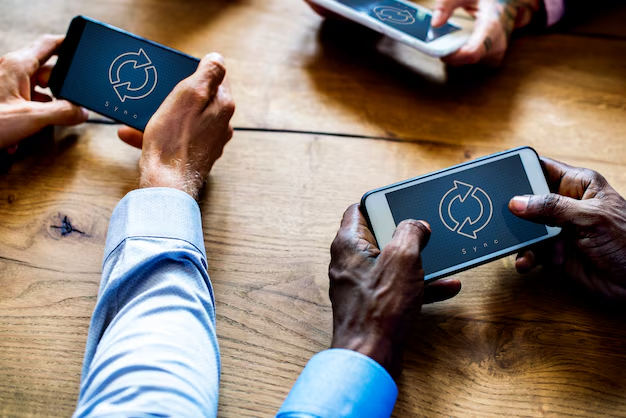Effortlessly Transfer Apps from One Android Device to Another: A Comprehensive Guide
In today’s fast-paced world, our smartphones have become indispensable tools, filled with apps that cater to every need, be it productivity, entertainment, or socializing. But what happens when you need to upgrade your Android phone or have to switch devices? Transferring apps from one Android to another can seem daunting, but it doesn't have to be. We've compiled this ultimate guide to help you understand the different methods and their benefits, ensuring you carry your digital world intact to your new device.
Understanding the Basics: Why Transfer Matters
Switching devices isn’t just about hardware—it's about seamlessly maintaining your digital ecosystem. Apps store valuable data, settings, and user preferences. Whether it's a high-score on a game or crucial business data, each app contains critical pieces of your digital life. Ensuring these apps and their data are transferred efficiently can spare you hours of re-downloading and setup time.
Methods of Transferring Apps
1. Google Account Sync
Your Google account is the backbone of your Android experience. Leveraging it for app transfer is one of the simplest ways to move applications to a new device.
Step-by-Step Guide:
- Back Up Your Data: On your old device, go to Settings > Accounts > Google Account > Account Sync. Make sure ‘App Data’ is checked.
- Enable Device Backup: Still in Settings, navigate to System > Backup. Enable ‘Back up to Google Drive.’
- Set Up New Device: During the setup of your new device, log in with the same Google account. Use the option to restore from backup. This will transfer apps and certain data to your new device.
2. Using Android’s Nearby Share
A feature akin to Apple’s AirDrop, Nearby Share allows you to send apps directly between Android devices without an internet connection.
Steps:
- Ensure Bluetooth and Location are On: Both devices need these features enabled.
- Nearby Share on Sender Device: Open the Google Play Store, tap on your profile picture > My apps & games > Share > Send.
- Nearby Share on Receiver Device: In the same section of the Play Store, choose Receive and select apps to accept.
3. Third-Party Apps for App Transfer
There are several third-party applications designed to assist in transferring data between Android devices. These apps typically offer more control and options than built-in Android features.
Popular Choices:
- Samsung Smart Switch: Ideal for transferring to Samsung devices, supporting apps, settings, and media.
- CloneIt: Offers user-friendly transfers of apps, system settings, and more.
- SHAREit: Known for its high transfer speed and support for a wide variety of file types.
4. Manual App Reinstallation
Though not recommended for large app libraries, manual reinstallation is a straightforward approach for transferring a few select apps or starting afresh on a new device.
Process:
- On the new device, open Google Play Store.
- Access 'My apps & games' from your profile picture dropdown.
- Navigate to Library and manually download desired apps.
Additional Considerations
Transferring App Data
While transferring apps is essential, what about the invaluable data they contain? Some apps store data locally, making transfer a bit more complex.
Options:
- Cloud Services: Many apps offer integrated cloud storage for data backup. Check app settings to utilize this feature, ensuring settings and progress transfer seamlessly.
- App Specific Transfer Options: Certain apps have built-in data backup and restore functions. Games like Clash of Clans, for instance, use services like Google Play Games for data retention.
Privacy and Security
When transferring apps, it’s crucial to maintain privacy and security standards:
- Erase Data on Old Device: Once data is transferred, consider resetting your old device to prevent unauthorized access.
- Use Trusted Networks: Perform transfers on secure networks to avoid data interception.
Addressing Compatibility Issues
Consider that not all apps may be compatible with new device versions or OS updates. Always check for app compatibility with your new device model and Android version to ensure smooth functionality.
The Role of Cloud Services in App Transfer
Cloud services play an increasingly vital role in maintaining continuous access to app data. Dropbox, Google Drive, and OneDrive are excellent platforms for storing data that might not be automatically backed up by apps. Keeping routine backups on cloud storage can minimize disruptions when transitioning between devices.
How Cloud Storage Can Help:
- Provides a centralized backup location for documents, photos, and app data.
- Facilitates restorations when tech issues arise.
- Offers access to files across different devices and platforms.
Summary Section: Key Steps to Transfer Apps from Android to Android 📱➡️📱
- Sync with Google: Ensure your Google account is synced for a hassle-free setup.
- Embrace Nearby Share: Swiftly send and receive apps directly between devices.
- Opt for Third-Party Tools: Consider apps like Smart Switch, CloneIt, or SHAREit for comprehensive transfers.
- Backup with Cloud: Utilize cloud services for additional data and settings protection.
- Verify App Compatibility: Check if all apps will work on your new setup.
By understanding and leveraging these methods, you are not only preserving your app data but also making your transition to a new Android device as smooth and stress-free as possible. Empower yourself with this knowledge, and you'll never look back when upgrading to the latest technology.

Related Topics
- How Can I Transfer a Video From Iphone To Computer
- How Can I Transfer Apps From Iphone To Ipad
- How Can I Transfer Apps From One Iphone To Another
- How Can I Transfer Contacts From Iphone To Iphone
- How Can I Transfer Contacts From One Iphone To Another
- How Can I Transfer Data From Iphone To Android
- How Can I Transfer Data From Iphone To Iphone
- How Can I Transfer Data From Iphone To Samsung
- How Can I Transfer Files From Android To Pc
- How Can I Transfer From Iphone To Samsung